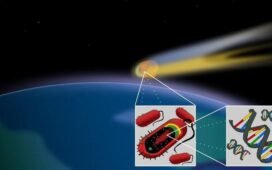The earliest Milky Way-like galaxy, REBELS-25, was spotted rotating about its axis. It’s only 700 million years old: 5% of our present age.
The Milky Way, like all spiral galaxies, spins about its axis.
Stars and gas rotate in a disk, orbiting the galactic center.
However, this state — in theory — can only be achieved after enough time has passed.
Early on, cold streams of gas collide and collapse, forming stars.
This leads to asymmetrical shapes for the earliest proto-galaxies, as confirmed…















